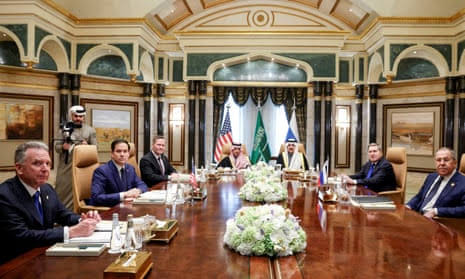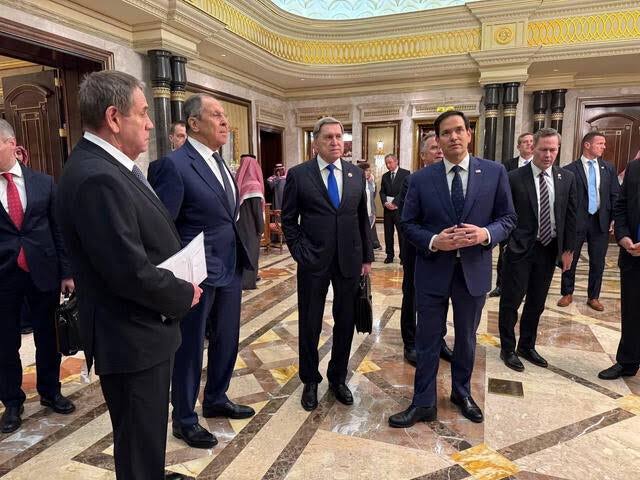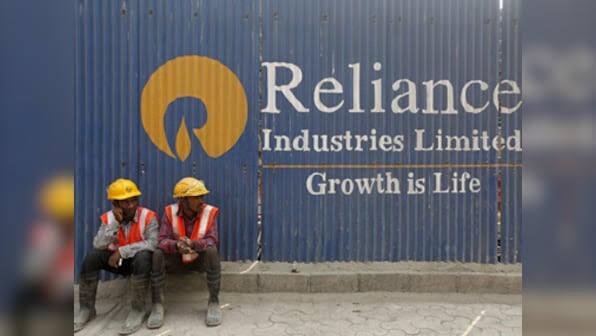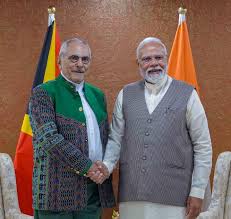In a historic move that could reshape global diplomacy, the United States and Russia have agreed to take initial steps toward ending the war in Ukraine and improving their strained relations. The meeting, held at Diriyah Palace in Riyadh, Saudi Arabia, on February 18, 2025, marked a rare thaw in tensions between the two nations, which have been at odds for years over the ongoing conflict.
 Following the talks, U.S. Secretary of State Marco Rubio emphasized that both sides had reached a broad understanding on three key points: restoring diplomatic staffing at their respective embassies, establishing a high-level team to support Ukraine peace talks, and exploring avenues for economic and geopolitical cooperation. While he acknowledged that these discussions were only a starting point, the meeting signaled a dramatic shift in U.S. foreign policy under President Donald Trump, raising hopes of de-escalation in the war-torn region.
Following the talks, U.S. Secretary of State Marco Rubio emphasized that both sides had reached a broad understanding on three key points: restoring diplomatic staffing at their respective embassies, establishing a high-level team to support Ukraine peace talks, and exploring avenues for economic and geopolitical cooperation. While he acknowledged that these discussions were only a starting point, the meeting signaled a dramatic shift in U.S. foreign policy under President Donald Trump, raising hopes of de-escalation in the war-torn region.
Russian Foreign Minister Sergey Lavrov echoed the sentiment, calling the talks “very useful” and stressing that Washington and Moscow had agreed to conduct regular consultations on Ukraine. “We not only listened but also heard each other,” Lavrov stated, suggesting that the American delegation had begun to better understand Russia’s perspective.
Despite these diplomatic overtures, the absence of Ukrainian officials at the meeting has sparked concerns. Ukrainian President Volodymyr Zelenskyy firmly stated that his country would not recognize any agreement made without its participation. European allies, too, have voiced apprehension about being sidelined in a process that could shape the continent’s future security landscape.
The meeting in Riyadh is the most significant diplomatic engagement between Washington and Moscow since Russia’s full-scale invasion of Ukraine on February 24, 2022. While previous encounters, such as the brief exchange between Lavrov and then-Secretary of State Antony Blinken at a G20 meeting in India, failed to yield substantial results, this latest dialogue suggests a potential opening for negotiations.
The diplomatic shift has sent Ukraine and its allies scrambling to secure a place at the table, wary of any backroom deals that could compromise their interests. French President Emmanuel Macron, who spoke with both Trump and Zelenskyy after a European meeting on Monday, reiterated his commitment to a “strong and lasting peace in Ukraine” and stressed that any agreement must include robust security guarantees for Kyiv.
The evolving situation also raises questions about international sanctions imposed on Russia in response to its invasion. Rubio acknowledged that sanctions were a collective effort by the U.S. and its allies, and any resolution to the conflict would need to involve European partners, given their own restrictive measures against Moscow.
The meeting also underscored Saudi Arabia’s growing role as a diplomatic broker. Crown Prince Mohammed bin Salman, whose reputation has been marred by the 2018 killing of journalist Jamal Khashoggi, has sought to position himself as a key mediator in global affairs. Saudi Arabia has previously facilitated prisoner exchanges between Ukraine and Russia and hosted Zelenskyy at an Arab League summit in 2023.
Meanwhile, despite the diplomatic overtures, fighting continues in Ukraine. Russian forces launched a massive drone attack overnight, targeting multiple regions. Ukrainian officials reported that most of the 176 drones were intercepted, but some struck residential areas, causing injuries and damage.
As efforts to bring the war to an end take shape, the road ahead remains uncertain. While Tuesday’s meeting in Riyadh may have opened a door, it is clear that much more work is needed to achieve a resolution that is acceptable to all parties involved. For Ukraine, its allies, and the world at large, the hope now is that diplomacy, rather than continued bloodshed, will chart the path forward.




